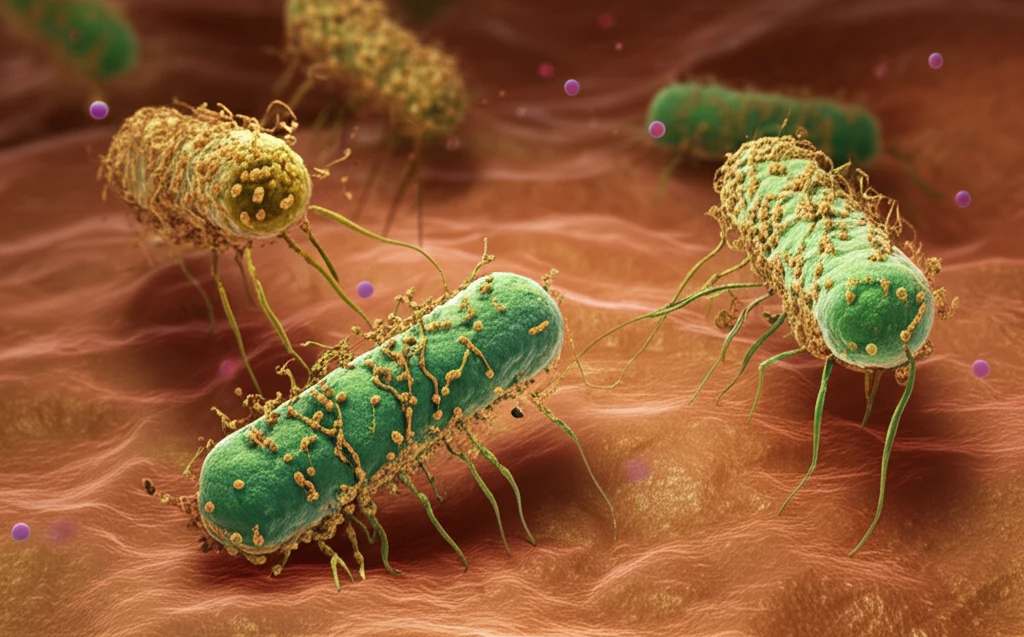
Supercharged Antibiotics: How Nanoparticles Could Revolutionize Bacterial Infection Treatment
"Unlock the potential of gold nanoparticles in enhancing antibiotic effectiveness against resistant bacteria and learn how this innovative approach can transform healthcare."
In the relentless battle against bacterial infections, the rise of antibiotic resistance poses a significant threat. Common infections are becoming increasingly difficult to treat, pushing researchers to explore innovative solutions beyond traditional antibiotics. One promising avenue is the use of nanotechnology, specifically gold nanoparticles, to enhance the effectiveness of existing antimicrobial drugs.
Gold nanoparticles (GNPs) possess unique properties that make them ideal candidates for drug delivery and enhancement. Their biocompatibility, stability, and ease of synthesis allow them to interact effectively with both bacteria and antibiotics. By attaching antibiotics to these nanoparticles, scientists aim to improve drug delivery directly to the site of infection, increasing the drug's impact while reducing side effects.
Recent research has focused on using GNPs to enhance the activity of imipenem, a powerful antibiotic often used as a last resort against stubborn bacterial infections. Studies show that when imipenem is combined with GNPs, its ability to combat bacteria like Pseudomonas aeruginosa—a common culprit in hospital-acquired infections—increases dramatically. This innovative approach offers hope for a future where even the most resistant bacteria can be effectively treated.
How Do Gold Nanoparticles Supercharge Antibiotics?

The secret to GNPs' ability to boost antibiotics lies in their unique physical and chemical properties. These tiny particles can be customized in various shapes and sizes, allowing them to interact with bacterial cells in multiple ways. When an antibiotic is attached to a GNP, it can:
- Improve Drug Delivery: GNPs can carry a higher concentration of the antibiotic directly to the bacterial cells, maximizing its impact.
- Disrupt Bacterial Membranes: GNPs can destabilize the bacterial cell membrane, making it easier for the antibiotic to enter and disrupt essential functions.
- Overcome Resistance Mechanisms: Some bacteria have developed ways to pump antibiotics out of their cells or neutralize them. GNPs can help bypass these resistance mechanisms.
What Does This Mean for the Future of Infection Treatment?
The successful enhancement of antibiotics with gold nanoparticles opens up new possibilities for combating drug-resistant infections. This approach could lead to more effective treatments, reduced reliance on last-resort antibiotics, and potentially save lives. As research continues, we can expect to see more innovative uses of nanotechnology in medicine, transforming how we fight diseases and improve patient outcomes.
